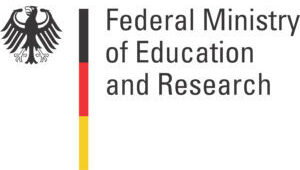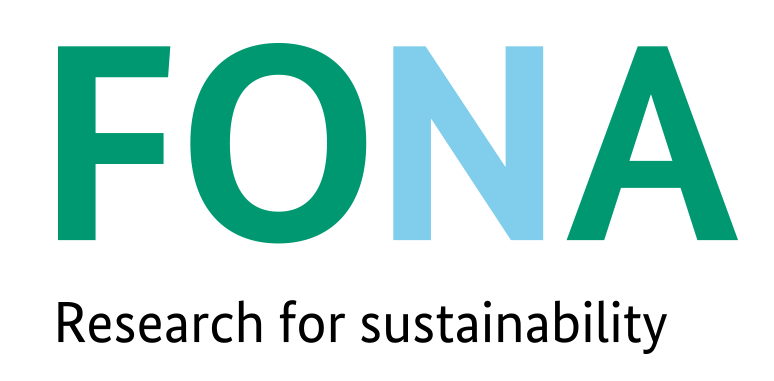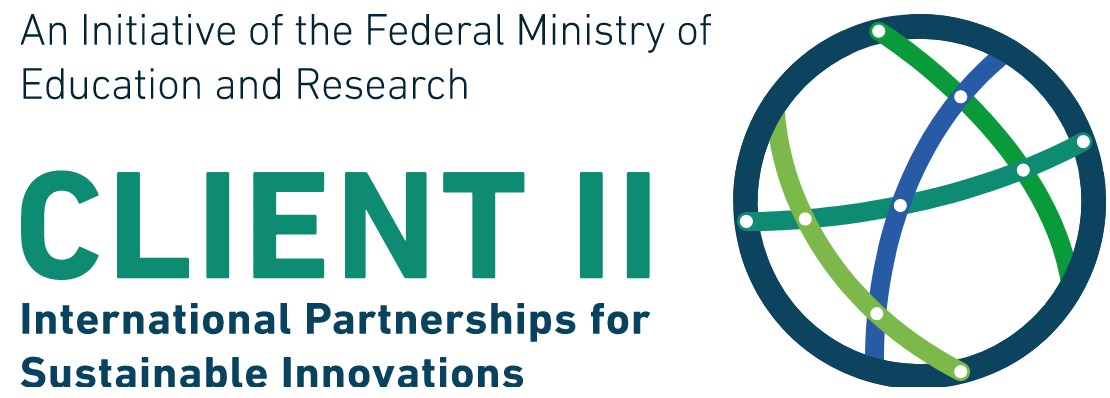The VIBM research and laboratory staff and research partners NUCE and TDTU are focused on implementing test facilities in WP3.3. In a first phase (possibly already before the construction of the test equipment), a research group will be trained in Germany at the locations of the Fraunhofer IBP (Stuttgart and Holzkirchen) and the industrial partner TAURUS in Weimar (a leading supplier of laboratory equipment).
The training includes theory for the respective examination (Fraunhofer-IBP), equipment engineering and first tests (TAURUS 1 to 2 days), joint execution of calibration measurements, test assignments, special applications of standards etc. (Fraunhofer IBP). In this case, it should be emphasized that the participants learn to carry out measurements independently. The Vietnamese institutions together train 8 people over a period of about one week. After installation of the first equipment in Vietnam, parallel comparative measurements will be carried out in Germany and Vietnam (see WP3.3c). In a third phase, at the time of the final installation and after the commissioning of the plant, laboratory personnel from Germany will visit the locations in Vietnam for the exchange of experience and further education. It also deals with any difficulties that may arise when carrying out the tests and implements the relevant test standards and continues and intensifies the training that has been started in Germany. The final exchange of experiences and the continuation of the trainings are carried out by two employees of the Fraunhofer-IBP (scientific) and employees of the company TAURUS (technical problems).
Lectures for university courses in architecture, civil engineering and materials science are being developed to be taught at the partner universities (initially NUCE, TDTU). On a scientific basis and on the basis of the CAMaRSEC project results, the teaching material will present basic and up-to-date contents of building physics, material science and building material science (durability, new materials, recycled material), technical building systems and energy-efficient and resource-efficient construction.
It should be suitable for the university education of young engineers and technically oriented architects and also serve for the further education of the corresponding occupational groups. The lecture notes will be the topics of relevance for the construction practice in developing countries and markets and for the current construction in regions with tropical climate. It will initially be developed for use in Vietnam, but will also be applicable in other countries in the region (Cambodia, Thailand, Indonesia, South China). Therefore, in addition to a Vietnamese edition, an English language edition will be created. The teaching material and instruction will cover building physics, architecture-specific and material science basics as well as advanced knowledge for the application in planning. The application of computer-based simulation models and fundamentals of building physics measurement technology is included in the syllabus. Also topics of the socio-economic context, the user behavior and the relevant actors are to be presented. To this end, the specialist colleagues (Fraunhofer IBP, VIBM, University of Hamburg) are involved in the preparation of the lecture material. The lecture materials are developed in parallel to the contents of the textbook for energy-efficient and resource-efficient construction (WP5.6) and are coordinated accordingly. Both products should be used in context.
Based on the research results of the previous work packages, the WP 5.3 will develop theoretical training courses and practical training for Vietnamese construction executives and implement them via Training of Trainers / ToTs. Target groups are both participants in initial training as well as participants in continuing education, who then apply the new training content in the construction companies.
As far as possible, the training / training content will be integrated into existing relevant curricula at the Vietnamese practice partner College of Urban Works Construction (CUWC). The CUWC already offers initial training and advanced training in the construction sector. In addition, it is subordinate to the MoC and serves as a Leitcollege for the testing and dissemination of new content and training / training approaches,to transfer this to other Baucolleges of the country. In order to adapt the curricula, lecturers / trainers of the BFW Bau Sachsen e. V. works closely with lecturers / trainers of the CUWC. The Vietnamese lecturers / trainers are then instructed in the context of ToT to implement the adapted curricula in theory and practice. This qualifies them as local and national multipliers. In the first phase of the WP, content-related interfaces or links to the new content are identified in existing Vietnamese curricula. During the second phase, experts from the BFW Bau Sachsen develop training materials and linked concepts for practical training sessions. In doing so, the research results are broken down to the requirements of building (practice) practice. In coordination with the local trainers / lecturers, the results are evaluated and, if necessary, adjusted. In addition, appropriate practical training courses will be built on site. During the third phase, the instructors and instructors of the CUWC will be trained in ToT as multipliers for the new training content. In doing so, they will be assisted by experts from BFW Bau Sachsen e. V. instructed to combine and convey theoretical and practical training content in terms of action orientation. Following this approach, the results of the WP can be applied both to initial training and to the training of construction site personnel.
The project will organize a series of four workshops with relevant stakeholder groups. The target size for participants is 60-80 persons. The stakeholder workshops should purposefully link project activities with locally established key players. These stakeholders have a great deal of experience in public relations and advocacy, for example EuroCham through the annual White Paper.
The multipliers outside of science and state institutions were deliberately chosen for the project. Not least, civil society should be strengthened and bottom-up approaches promoted.
Two of the workshops will be held in HCMC to spread our project approaches in the South of Vietnam as well.
The stakeholder workshops are specifically organized with the following partners:
1) Green Growth Sector Committee of the European Chamber of Commerce (EuroCham)
2) Vietnam Green Building Council (VGBC)
3) GreenID (NGO)
4) German Business Association (GBA)
The main objective of the publication and subsequent systematic dissemination of the Green Housing, Energy Efficiency, Durability and Health Handbook is to communicate sustainability goals to the general public. The information is communicated in a comprehensively illustrated, understandably formulated way and thus also in a form accessible to laymen.
The handbook is published in English and Vietnamese. It will be published as a printed publication in large numbers (target size: 5,000 copies), but also online via social media. This handbook will continue the series of manuals for “Green Housing” and “Green Products” and will revise, improve and expand their content based on the scientific findings of our project.
In general, a bottom-up approach is pursued that tends to convince people rather than force them, the latter, for example, through top-down regulations implemented. In general, the handbook should take a holistic approach: the range of principles and measures introduced covers all constructive and design aspects of buildings, building materials and the behavioral dimension. This also includes information on how the basic principles of bioclimatic architecture can be rediscovered before the model of sustainable urban development.
The main target group of the manual are the rapidly developing urban middle classes (the so-called “new consumers”). But also for companies in the construction industry, for teachers and students at universities as well as for the local administration, our handbook with information on energy-efficient, sustainable and healthy building offers valuable advice and suggestions.
In particular, building users should be convinced by being informed about payback periods in the implementation of measures in the area of climate-adapted residential buildings and energy- and resource-efficient buildings. In this context, the slogan “save resources, save money” should be placed on the title page of the manual.
With regard to the content and editorial development of the manual, as many local partners as possible should be involved, also in order to strengthen the ownership of this product. An important finding of the work on the previous editions is that it has not been completed after the publication of the manual. On the contrary, sustainable effects can only be achieved through an intensive dissemination campaign in cooperation with local partners.
Based on the results of the CAMaRSEC project, the textbook on energy-efficient and resource-efficient construction will present basic and current contents of building physics, material sciences and building material science (durability, new materials, recycled materials), technical building systems and energy-efficient and resource-efficient construction.
The textbook should be suitable for the university education of young engineers and technically oriented architects and also serve for the further education of the corresponding occupational groups. To illustrate and enrich the contents of the textbook CAMaRSEC project content content and visual represent (e.g. photos of structural damage, photos of experimental facilities, laboratory equipment). The textbook will cover issues of relevance to building practice in developing countries and markets, and current building in tropical climate regions. It will initially be developed for use in Vietnam, but will also be applicable in other countries in the region (Cambodia, Thailand, Indonesia, South China). Therefore, in addition to a Vietnamese edition, an English language edition will be created.
Dr. Dirk Schwede and Dr. Pam Thi Hai Ha will act as publisher and lead author. They will divide the contents of the book and give guidelines for the uniform design of the individual chapters. Chapters are created by the main authors, and additional authors are invited to create the chapters. For quality assurance, the aim is to authorize the individual chapters of author teams (2 or 3 authors) and to carry out an internal edition and review process. The contents of the textbook are developed in parallel with the contents of the lecture notes (WP5.2) and are coordinated accordingly. Both products should be used in context.
Universität Stuttgart
Institut für Gebäudeenergetik, Thermotechnik und Energiespeicherung (IGTE)
Pfaffenwaldring 35
70569 Stuttgart
Deutschland


